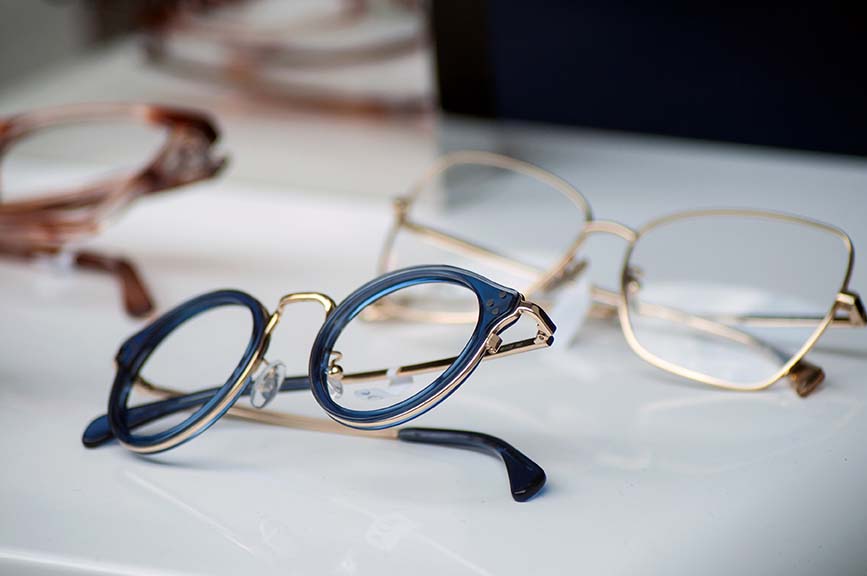
Understanding Your Vision Prescription
If you’re getting a vision prescription for the first time, you might be a little confused or overwhelmed by looking at the chart. The numerous abbreviations and measurements detailing an eyeglass or contact lens treatment can be a little complex.
If you think you will need a prescription soon, keep reading this article to learn how to comprehend each aspect.
Format and Basic Vocabulary
Most prescription sheets follow the same table format. It contains units expressed in abbreviations and a measurement that details the patient’s needs.
Here are the abbreviations, what they stand for and what they mean:
· OD (sometimes RE) – Oculus dexter — right eye
· OC (sometimes LE) – Oculus sinister — left eye
· SPH – Sphere — lens power needed to correct your vision for farsightedness or nearsightedness
· D – Diopter — unit of measurement for lens power
· CYL – Cylinder — power needed to correct one’s astigmatism
· Axis – Axis — Number between one and 180 to represent the exact point of one’s astigmatism in their eye
· ADD – Additional magnification — common for people affected by presbyopia
· P – Prism — prescription for patients with double vision
· PD – Pupillary distance — distance between the patient’s pupils to help align their eyeglass lenses properly
Eyeglass prescriptions typically correct refractive errors, which are issues with the cornea that can cause farsightedness, nearsightedness, presbyopia and astigmatism.
Farsightedness and Nearsightedness Prescriptions
Farsightedness, also known as hyperopia, makes nearby objects look blurry. Nearsightedness, also known as myopia, makes far-away objects look blurry. If a patient has either of these issues, their prescription will be detailed in the sphere column.
Sphere (SPH) and Diopters (D)
Sphere is the power needed to correct one’s farsightedness or nearsightedness.
The unit of measurement for lens power is diopters.
When the measurement has a plus sign, it means the patient is farsighted, and their prescription is to enhance their close-up vision. When there is a minus sign next to a number, it means the patient is nearsighted, and they need distance correction.
Examples:
If your unit reads +6.00 D, the lens has six diopters of farsightedness.
If your unit reads -5.00 D, the lens has five diopters of nearsightedness.
The diopter measurement for healthy vision is zero. So, the farther the number is from zero in either direction, the stronger the prescription.
Astigmatism Prescriptions
Astigmatism is a type of refractive error; it means someone has an unusual, imperfect shape to the cornea or lens inside the eye, which causes blurred vision. Rather than having a normal sphere-shaped eye, a patient’s eyeball is shaped more like an egg or oval. Therefore, they need cylindrical correction.
The two fields to look to on the prescription are cylinder and axis:
Cylinder (CLY)
Cylinder measures the severity of one’s astigmatism condition and is the lens power needed to correct it. The more unusually shaped a patient’s eye is, the more astigmatism a patient has. It is also measured in diopters.
Axis
This number states where the astigmatism is in your cornea. It is measured between one and 180 degrees.
ADD (sometimes “Add”)
ADD stands for “additional magnification,” as some patients need two different corrections in one lens, especially those experiencing presbyopia. This unit shows added power to glasses to see small details up close, such as reading text. It basically means there is a section on your glasses that are reading glasses, usually at the bottom. Bifocals and progressive lenses are two very common examples of this type of prescription.
Prism (P)
On the right side of the slip, there is a field for prism. This is a prescription for people with double vision to get a pair of glasses that align the objects they see twice into one.
When a patient gets a prism prescription, the optometrist will make one of the following notes for the placement of the prism base in the eyeglass’s lens to correct the image the patient sees:
· BU – Move it up
· BD – Move it down
· BI – Move it in
· BO – Move it out
The prism has its own refractive strength, which is measured in prism diopters.
Why Contact Lenses Are Different
These prescriptions have measurements specific to the size and brand of the contacts. In addition to getting a prescription for vision correction, you need to get fitted for contacts to see if they are a viable solution.
Getting fitted for contacts also contains these two measurements:
· Base curve – Measures the curvature and shape of your eye, usually a number between eight and 10 millimeters
· Diameter – Distance from one side of the lens to the other, usually around 13 to 15 millimeters
Additional Resources
Here are a couple of sources that provide additional explanations and visual aids:
· How to Read Your Eye Prescription
· What Do All Those Abbreviations and Numbers Mean on Your Eye Prescription?
You should get your eyes checked every one to two years to make sure they are healthy; and, if you have a prescription, you should ensure it is accurate with the current condition of your vision.
Was this article informative? If so, go to healthyvisionassociation.com for more content and to learn more about our dedication to promoting healthy vision and overall health.
